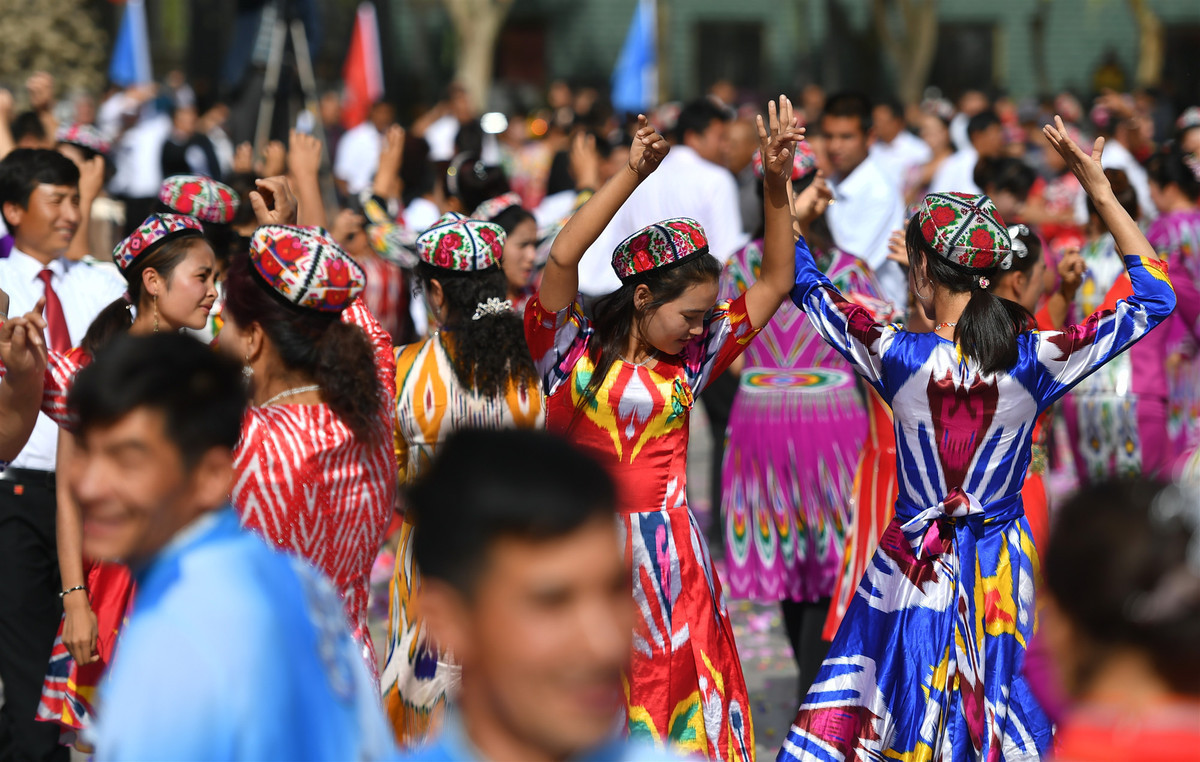All people in the region have worked for unity


In ancient times, Xinjiang was known as the Western Regions, a Han Dynasty (202 BC-AD 220) term for the area west of Yumenguan in Gansu province. After the incorporation of the Western Regions into China by the Han rulers, Xinjiang began its integration process with the rest of China. That Xinjiang had close economic and cultural links with the rest of China since the Neolithic Age helped this integration.
Seashells, inland silk, bronze mirrors and lacquerware from China's southeastern coast have been unearthed in different parts of Xinjiang. Also, many ancient Chinese documents list the Western Regions as part of Chinese civilization.
In 60 BC, the Han rulers set up the Protectorate of the Western Regions to administer the regions north and south of the Tianshan Mountains and the vast area along Congling, or the Pamir Plateau, manifesting the formal incorporation of the region into China.
The Sui (581-618) and Tang (618-907) dynasties initiated a new model of governance for the Western Regions, extending their jurisdiction over a larger area. After 630, the Tang rulers set up the West Yi Prefecture (later changed to Yi Prefecture), Xi Prefecture and Ting Prefecture in the eastern part of Xinjiang to administer its 12 counties. And in 640, the Tang rulers set up the Protectorate of Anxi, establishing comprehensive jurisdiction over the Western Regions.
The establishment of a series of systemic jurisdiction and government organs during the Sui and Tang dynasties, especially Tang Dynasty, promoted Xinjiang's economic development while helping maintain its social stability, and ensuring the security of the caravans and consignments on the ancient Silk Road.
The Yuan Dynasty (1271-1368), too, attached great importance to Xinjiang-a policy that was followed by the Ming Dynasty (1368-1644) rulers.
In the mid-19th century, the Haohan Khanate invaded Xinjiang and established a puppet regime in Kashgar. But with the strong support of the people of all ethnic groups in Xinjiang, General Zuo Zongtang and his troops dislodged the puppet regime and regained control of Xinjiang. Following this, the Qing Dynasty (1644-1911) rulers founded the Xinjiang province in 1884.
All these facts show that Xinjiang has been an inalienable part of China since ancient times. And Chinese people of all ethnic groups have worked together to uphold the unity and integrity of the country, and oppose foreign aggression and separatism, so as to build a community with a shared future.
The author is a researcher with the Institute of Chinese Borderland Studies, Chinese Academy of Social Sciences.


































